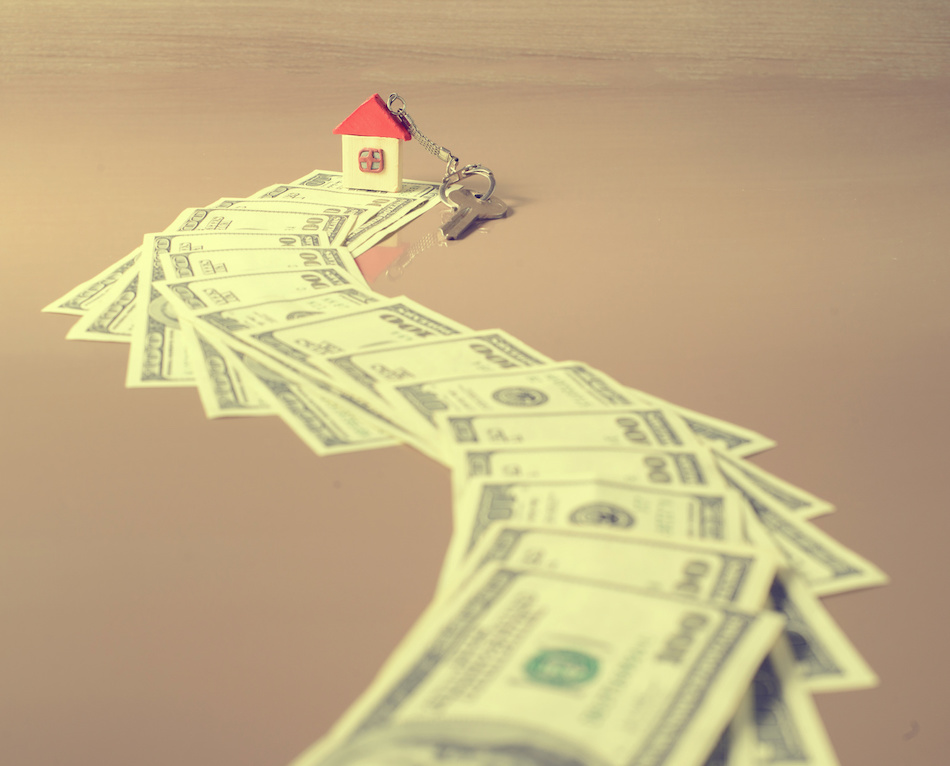What Size Down Payment Do I Need?
Posted by EdmontonRealEstate .ca on Friday, May 24th, 2019 at 9:38am.
 Buying a home requires a sizeable outset of money at the point of purchase, which can seem daunting or even nigh impossible to some home buyers. With the answer to these questions, you will understand how much you need to put down on the mortgage as a minimum, and how your down payment affects your monthly mortgage payment.
Buying a home requires a sizeable outset of money at the point of purchase, which can seem daunting or even nigh impossible to some home buyers. With the answer to these questions, you will understand how much you need to put down on the mortgage as a minimum, and how your down payment affects your monthly mortgage payment.
Why Do I Need a Down Payment?
The premise behind the down payment is to enter into a kind of partnership with your lender. The lender is providing the bulk of the funding for the home in a lot of cases, but you need to show that you are willing to put in some of your own money. This proves to the lender that you are committed to the mortgage and are unlikely to default on the loan during the term. It also provides you with a cushion of equity in the property, should values dip slightly throughout the first few years that you own the home.
What Is the Minimum Down Payment?
For years, people have relied on a 20 percent standard down payment. This is the minimum that lenders consider for borrowers to qualify for what is called a "conventional mortgage." However, 20 percent of the price of an average home could be as much as $100,000, or more in high cost-of-living areas like Vancouver or Toronto. This amount could be difficult to save for, especially if you do not already own a home to accrue equity passively. For loans less than $500,000, you may be able to get a mortgage with a down payment of 5 percent. For amounts between $500,000 and $1,000,000, you must pay at least 5 percent of the first $500,000, and 10 percent of the difference. For example, a home costing $550,000 would require a down payment of $30,000.
How Does the Down Payment Affect the Monthly Payment?
The monthly mortgage payment relates to the amount of the mortgage plus the interest rate. If you have a mortgage with a fixed interest rate and monthly payment, it will be divided between a predictable amount of interest and principal. The higher down payment you make, the less you owe to the lender. As such, a higher down payment will result in a lower monthly payment, depending on the interest rate you can secure and the type of mortgage you take. In some cases, making a higher down payment may qualify you for different types of mortgages with additional benefits.
Are There Reasons to Pay More Than the Minimum?
Any time you secure a mortgage with a down payment less than 20 percent, you may be required to pay for mortgage insurance. Mortgage insurance protects the lender in case of default, and the cost is paid up front or wrapped into your monthly mortgage payment. The insurance is usually provided by the Canada Mortgage and Housing Corporation (CMHC). The price depends on the loan amount and the size of the down payment you make. It could be less than 1 percent of the loan or more than 4 percent, related to the risk you present to the lender. Paying more than the minimum down payment helps you get to 20 percent equity sooner, which may allow you to renegotiate to a new mortgage without the added expense of insurance.
When Does LMI Come Into the Down Payment?
If you want to avoid paying mortgage insurance, you will need to pay a 20% down payment on your new home. LMI makes it possible for buyers to purchase a home with a 5% down payment, if the home is worth $500,000 or less. This makes it easier to purchase a home, and the cost of the mortgage insurance can be rolled into your mortgage payments. Once you reach 20% equity in your home, you can refinance your mortgage and drop the mortgage insurance. When you need a lower down payment in order to afford a property, LMI makes it possible. If you have the 20% to put down on a home because you have substantial equity in your current property, then you won't need to worry about LMI. The cost of your LMI can be 4% of your mortgage or more, depending on your risk level.
When you buy a home, be it in Northeast Edmonton or elsewhere, you need to make a down payment of at least 5 percent. Those who pay the minimum will shoulder additional costs in the form of insurance. As such, making a larger down payment when possible may be a wise idea to lower your overall costs for the term of the loan.

